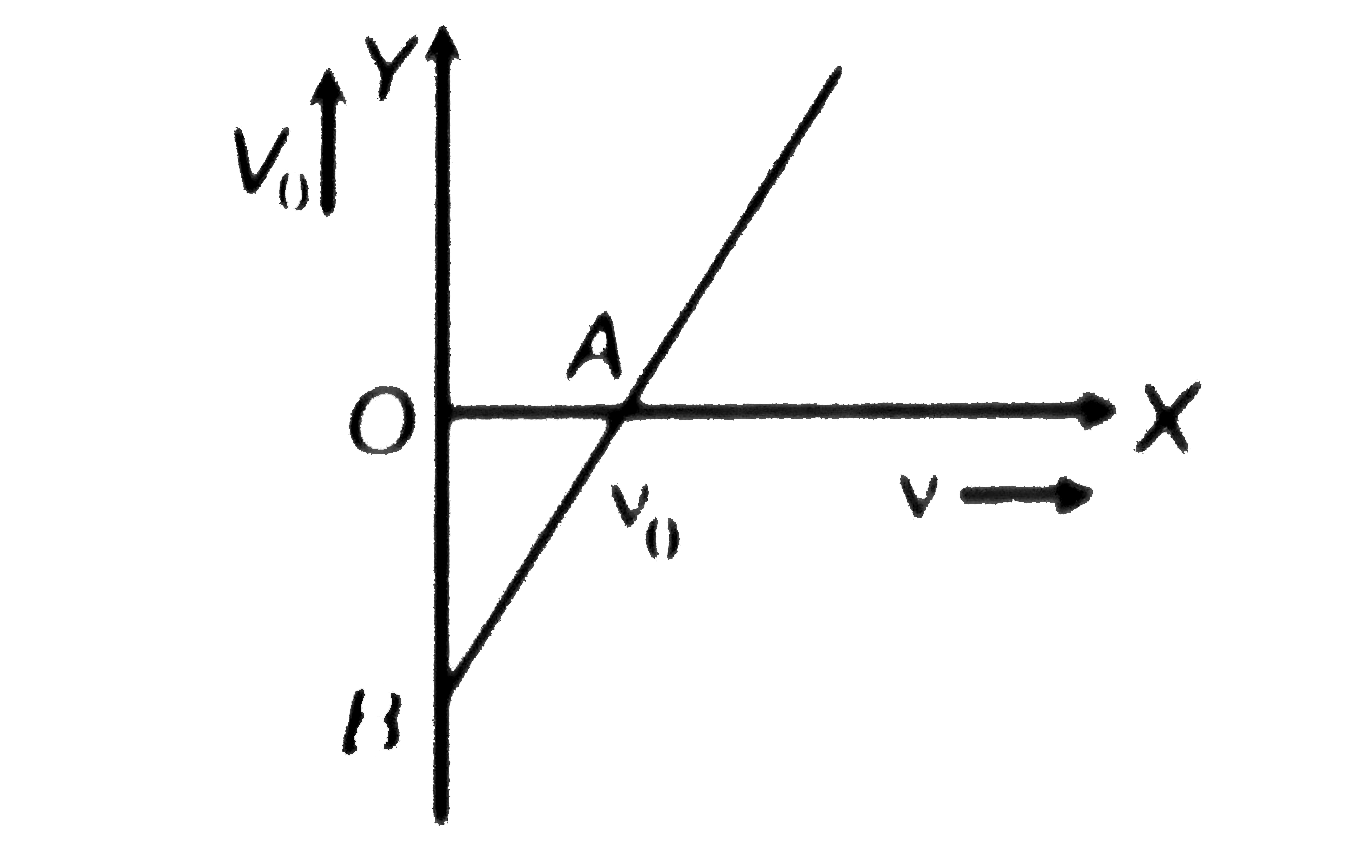In photoelectric effect the work function of a metal is 3.5 eV. The emitted electrons can be stopped by applying a potential of –1.2 V. Then
the energy of the incident photons is 4.7eV
the energy of the incident photons is 2.3eV
if higher frequency photons be used , the photoelectric current will rise
when the energy of photons is 3.5eV , the photoelectric current will be maximum
The correct Answer is:A
To solve the problem regarding the photoelectric effect, we will follow these steps:
Step 1: Understand the Given Values
We are given:
- Work function (φ) of the metal = 3.5 eV
- Stopping potential (V) = -1.2 V
Step 2: Use the Stopping Potential Formula
The stopping potential formula relates the stopping potential, the work function, and the energy of the incident photons. The formula is:
eV=E−ϕ
Where:
- e is the charge of an electron (which will cancel out),
- V is the stopping potential,
- E is the energy of the incident photons,
- ϕ is the work function.
Step 3: Rearrange the Formula
Rearranging the formula to solve for the energy E:
E=eV+ϕ
Step 4: Substitute the Known Values
Substituting the known values into the equation:
E=(−1.2V)+(3.5eV)
E=−1.2+3.5
E=2.3eV
Step 5: Analyze the Results
The energy of the incident photons is 2.3 eV. Since this energy is less than the work function (3.5 eV), it indicates that the photons do not have enough energy to emit electrons from the metal surface.
Step 6: Conclusion
- The emitted electrons can be stopped by applying a potential of -1.2 V, indicating that the energy of the incident photons is indeed less than the work function, confirming that no electrons will be emitted.
We are given:
- Work function (φ) of the metal = 3.5 eV
- Stopping potential (V) = -1.2 V
The stopping potential formula relates the stopping potential, the work function, and the energy of the incident photons. The formula is:
eV=E−ϕ
Where:
- e is the charge of an electron (which will cancel out),
- V is the stopping potential,
- E is the energy of the incident photons,
- ϕ is the work function.
Rearranging the formula to solve for the energy E:
E=eV+ϕ
Substituting the known values into the equation:
E=(−1.2V)+(3.5eV)
E=−1.2+3.5
E=2.3eV
The energy of the incident photons is 2.3 eV. Since this energy is less than the work function (3.5 eV), it indicates that the photons do not have enough energy to emit electrons from the metal surface.
- The emitted electrons can be stopped by applying a potential of -1.2 V, indicating that the energy of the incident photons is indeed less than the work function, confirming that no electrons will be emitted.
Similar Questions
The ejection of the photoelectron from the silver metal in the photoelectric effect experiment can be stopped by applying the voltage of 0.35 V when the radiation 256.7 nm is used, Calculate the work function for silver metal.
View SolutionThe ejection of the photoelectron from the silver metal in the photoelectric effect experiment can be stopped by applying the voltage of 0.35V when the radiation 256.7nm is used. Calculate the work function for silver metal.
View Solution
Knowledge Check
The work function of Cs is 2.14 ev find the wavelength of the incident light if the stopping potential is 0.6 V.
A326 nmB454 nmC524 nmD232 nm
Ejection of the photoelectron from metal in the photoelectric effect experiment can be stopped by applying 0.5 V when the radiation of 250 nm is used. The work function of the metal is
View SolutionIn photo-electric effect, what is meant by the terms:
(i) Work function of a metal.
(ii) Stopping potential.
View SolutionIn a photoelectric effect , the K.E. of electrons emitted from the metal surface depends upon
View SolutionIn an experiment on photoelectric effect the frequency f of the incident light is plotted against the stopping potential V0. The work function of the photoelectric surface is given by ( e is the electronic charge)

View SolutionThe work function of a metallic surface is 5.01 eV. The photoelectrons are emitted when light of wavelength 2000A falls on it. The potential difference applied to stop the fastest photoelectrons is
View SolutionThe work function of a metallic surface is 5.01eV. The photo - electrons are emitted when light of wavelength 2000Å falls on it . The potential difference applied to stop the fastest photo - electrons is [h=4.14×10−15eVsec]
View SolutionThe electron in the hydrogen atom jumps from excited state (n=3) to its ground state (n=1) and the photons thus emitted irradiate a photosensitive material. If the work function of the material is 5.1eV, the stopping potential is estimated to be: (The energy of the electron in nth state is En=−13.6/n2eV)
View Solution
